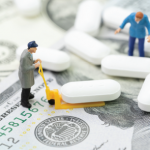Eighteen percent were due to product discontinuation by the manufacturer and another 18% were due to delays and capacity problems. Nine percent were due to difficulties getting raw materials and 4% of the sterile injectable shortages were due to increased demand because there was a shortage of another injectable medication—in other words, one shortage led directly to another.
Kevin Schweers, a spokesman for the National Community Pharmacists Association, says generic drugs, especially schedule II substances, have been in short supply. But there can be problems even when one generic is available to replace another generic.
An example, he says, is when a “new generic substituted in place of the old one is made by a different manufacturer and may come in a different color or shape. That can leave patients wondering and asking the pharmacist why their medication is different or if a mistake was made.”
Some healthcare professionals say patient safety has been affected, according to 1,800 healthcare practitioners who participated in a survey last year conducted by the Institute for Safe Medication Practices (ISMP), a nonprofit group. Twenty percent of the respondents said drug shortage–related errors were made, while 32% says they had “near misses” related to drug shortages. Nineteen percent said there had been adverse patient outcomes as a result of drug shortages.
The study noted two instances where patients died when they were switched to dilaudid because morphine was in short supply; both patients were given doses appropriate for morphine instead of doses adjusted for dilaudid.
Dr. Fudman says that the extent of the health effects on his rheumatology patients is pain and swelling if there is a delay in getting their medications. They also may have to take two pills rather than one, if a certain strength is in short supply, or get more frequent injections, as was the case when triamcinolone (Aristospan, Amcort, Aristocort) experienced a shortage.
“Aristospan is by far the best injectable steroid for joint injections, and the longest-lasting response,” he says. “When we don’t have that available, we inject with Kenalog or something else, and they don’t get as long lasting a response,” requiring another injection sooner.
Dr. Dao says one of the most potentially significant problems is with the shortage in the shingles vaccine, often given before a patient is started on biologic therapy to prevent that side effect.
“There are patients who would benefit from the shingles vaccine before they start biologic therapy,” she says. “Due to the unavailability of the vaccine, some have foregone the vaccine and started their biologics. It unclear whether this decision will significantly increase their risk for shingles in the future.”
